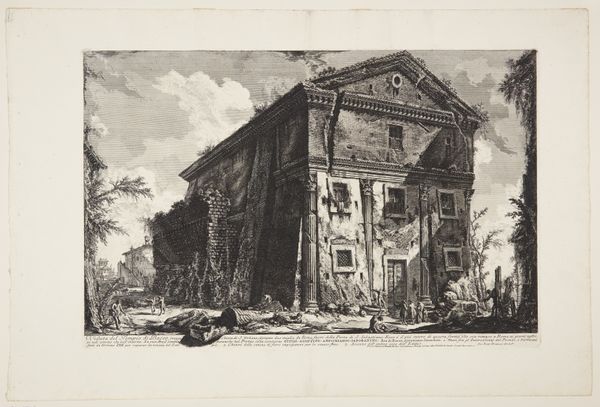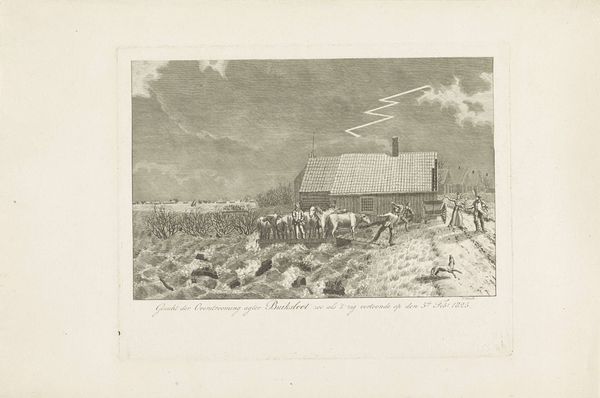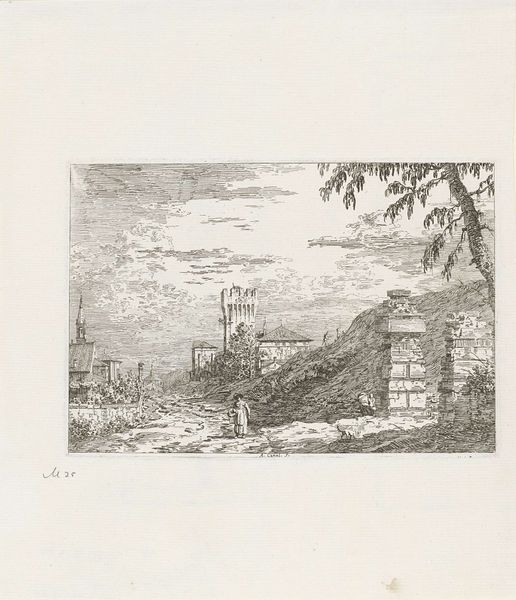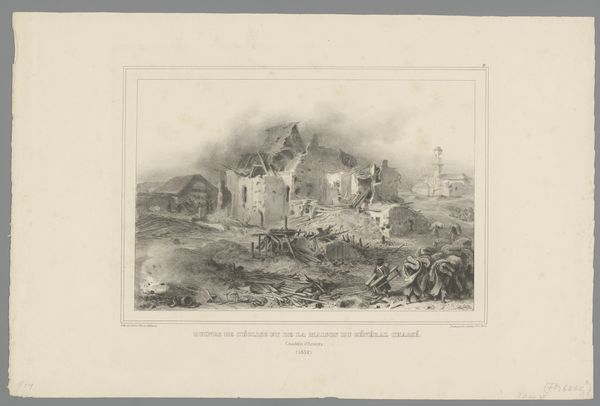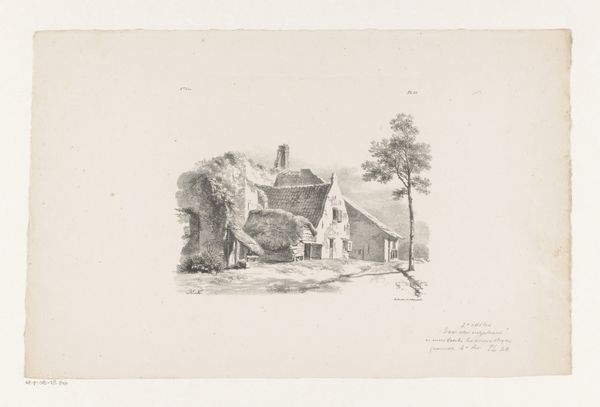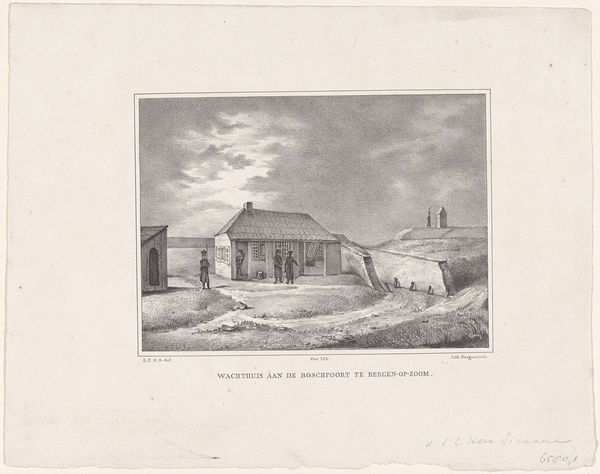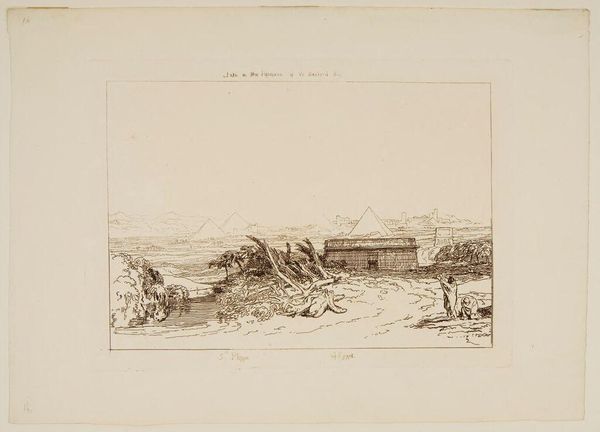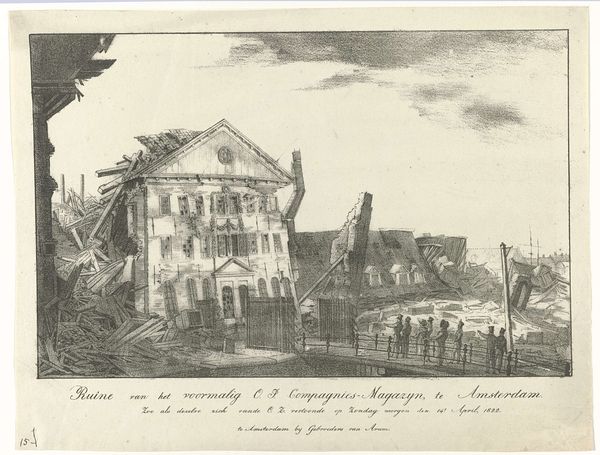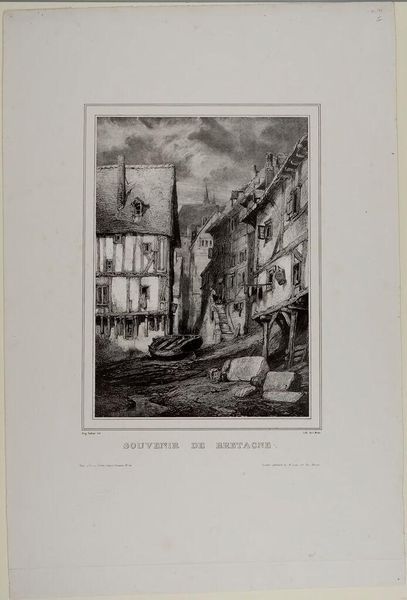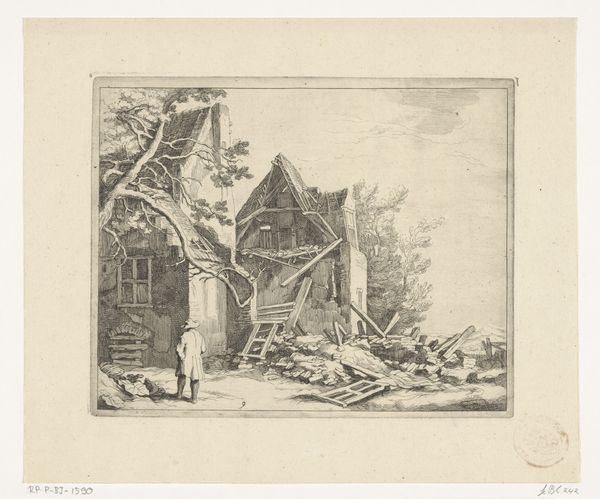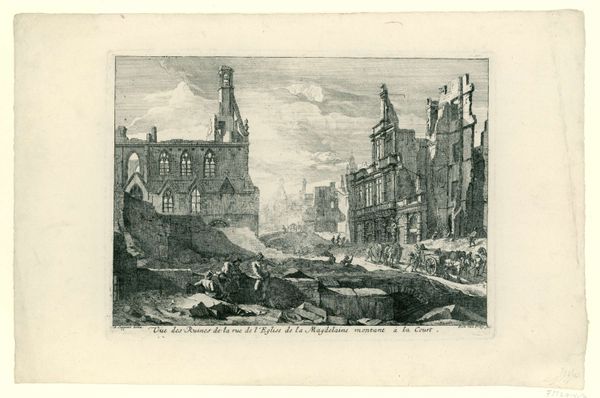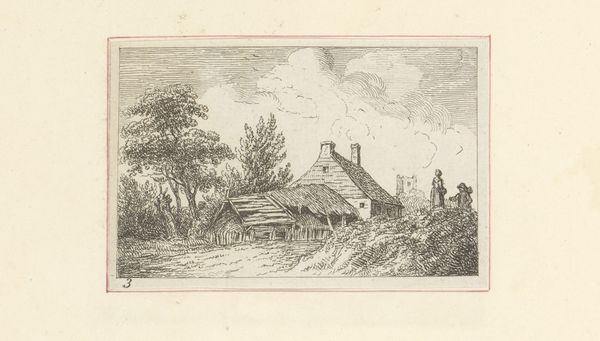
De ruine van den op den eersten januarij 1843 neergestorten Toren te Westzaan. Door welk onheil een huis met man, vrouw, knecht en vijf kinderen verpletterd werden 1843
0:00
0:00
print, engraving
#
narrative-art
# print
#
old engraving style
#
romanticism
#
cityscape
#
engraving
#
realism
Dimensions: height 329 mm, width 418 mm
Copyright: Rijks Museum: Open Domain
Herman Thepass made this print depicting the ruin of the collapsed tower at Westzaan in 1843. Here, the remnants of what was once a proud structure lie scattered, a stark reminder of the unpredictable forces of nature. The most striking element is, of course, the fallen tower. Towers throughout history have represented human ambition, aspirations reaching for the divine, yet their collapse speaks to the fragility of human endeavor when faced with forces beyond our control. Think of the Tower of Babel, a potent symbol of hubris. The act of its destruction carries an emotional weight, an echo of past calamities and a premonition of future ones, engaging us on a primal level. One can't help but recall other architectural collapses, a potent memento mori. This motif of collapse appears throughout art history, evolving to mirror cultural anxieties. The ruin, as a symbol, underscores the cyclical nature of rise and fall, resonating with the subconscious understanding of impermanence. The image serves as a stark reminder, of the constant dance between creation and destruction, ambition and its potential downfall.
Comments
No comments
Be the first to comment and join the conversation on the ultimate creative platform.
